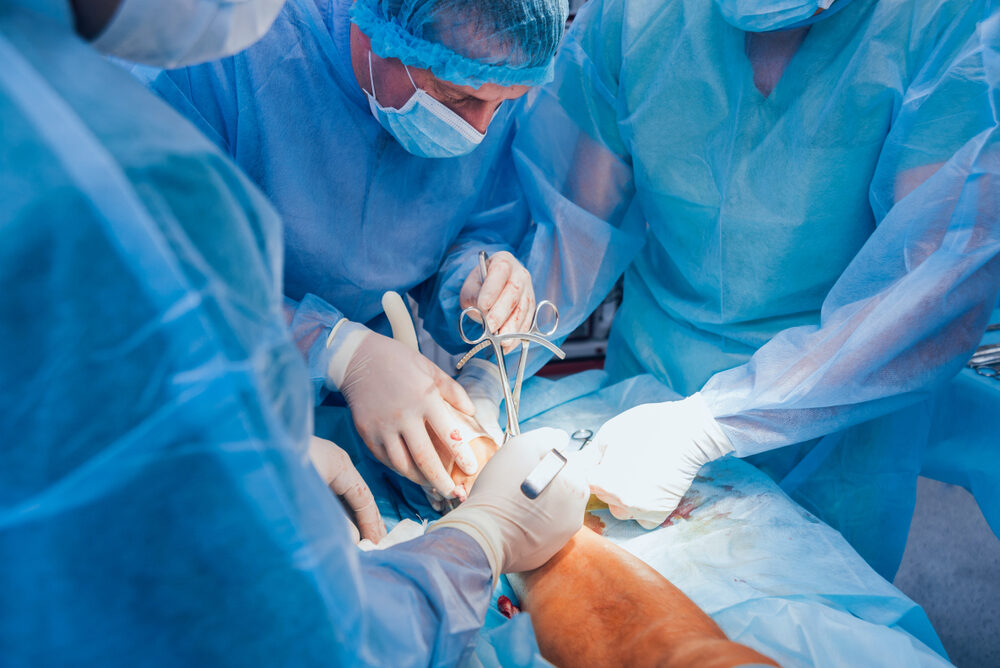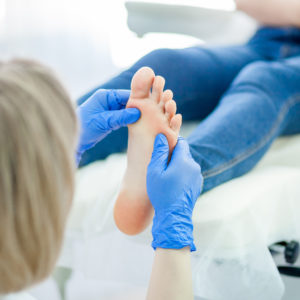Eligible for a Cartiva lawsuit?
Complications after Cartiva Surgery Linked To Less Successful Big Toe Outcomes
Lawsuits allege design problems with Cartiva toe implants cause complications after surgery, often resulting in additional procedures, loss of mobility and worse long-term outcomes for big toe pain.

Although the Cartiva Synthetic Cartilage Implant (SCI) has been promoted as a breakthrough medical treatment for big toe pain, a number of individuals are now pursuing lawsuits after Cartiva surgery, alleging that design defects with the toe implant left them with substantially less successful long-term outcomes, often resulting in the need for additional procedures to remove the device and fuse the bones in their big toe.
In this post we will explain the typical complications after Cartiva surgery that have been described in product liability lawsuits being pursued against the manufacturers, and how toe fusion surgery for a failed Cartiva implant often results in substantially worse experiences for many individuals.
Index of Cartiva Surgery Info on this Page
About Cartiva Synthetic Cartilage Implant Surgery
Since it was introduced by Wright Medical Group in 2016, Cartiva surgery has become an increasingly popular treatment alternative for individuals with arthritis in the big toe, known as hallux rigidus, hallux limitus, or post-traumatic arthritis.
Individuals with these forms of degenerative big toe arthritis often experience pain from the bones in the joint rubbing against one another, since there is either little or no protective cartilage, and Cartiva has been promoted as a safe toe implant surgery that will increase mobility of the foot and allow individuals to maintain a more active lifestyle.
Backed by clinical trials that touted a nearly 90% Cartiva success rate in relieving pain and improving function, a number of surgeons began recommending Wright Medical Groups Cartiva implant, which replaces the damaged or deteriorated cartilage in the first metatarsophalangeal joint of the big toe with a small gel-like device to provide cushioning.
Individuals who elected to undergo surgery for Cartiva have experienced varying degrees of problems from their big toe pain, and different impacts on their overall quality of life before receiving the toe implant. However, lawsuits commonly allege that plaintiffs never would have agreed to undergo the procedure if the manufacturer had disclosed the risk of complications after Cartiva surgery and the lower than expected success rates.

Learn More About
Lawyers are reviewing Cartiva lawsuits for individuals who experienced complications after receiving the toe implant. Settlement benefits may be available.
Learn More About this Lawsuit SEE IF YOU QUALIFY FOR COMPENSATIONCartiva Surgery Complications and Success Rates
What happens after Cartiva surgery?
After a Cartiva toe implant surgery patients will be sent home on the same day and can expect mild to severe discomfort for the first two weeks as the tissues and incision around the implant heal. In successful cases, individuals can expect to regain motion of their toe and return to normal activities within 4 – 6 weeks.
Immediately following a Cartiva implant procedure, a small dressing around the stitches of the incision site will remain on the foot until the two-week follow up appointment, at which point the stitches are removed. Some individuals may be able to put weight on their foot shortly after surgery, but often patients will be given crutches and instructed to keep their foot elevated for up to a week to help reduce swelling or inflammation in the foot.
While some individuals can immediately return to wearing normal shoes, many need to temporarily wear a special shoe or boot to protect the foot and aid in the healing process. In some cases, physical therapy may be recommended to help regain strength and flexibility in the foot, and specific exercises are often recommended to help regain mobility in the toe and strengthen the muscles around the foot.
Most Cartiva patients are able to return to light activities within a few weeks after surgery, with a typical two to four week absence from work for the initial recovery. For those with physically demanding duties, additional time may be recommended by the surgeon.
Overall, the recovery process for a successful Cartiva toe implant surgery is typically expected to take several weeks to a few months. However, a number of individuals have filed Cartiva surgery lawsuits over complications that emerged months later, after initially making a full recovery.
How successful is Cartiva surgery?
Cartiva sponsored clinical trials claimed a 87% success rate for Cartiva big toe implant surgery. However, more recent independent studies have found that the success rate for Cartiva implant surgery is drastically lower than advertised, somewhere between 46% and 21%.
While there some studies suggest Cartiva is effective in reducing pain and improving function in patients for up to five years, the long-term success rates of the big toe implant beyond this time frame is not quite clear, and substantially worse outcomes have been experienced after a Cartiva implant fails.
When Cartiva was introduced in 2016, it was supported by a clinical study that claimed there was 87% success for up to five years, with no anticipated future complications. However, shortly after the device entered the market, real world patient outcomes did not match the promising results of the clinical trials.
In 2019 a study was published by researchers from Cedar Sinai Hospital found that 30% of Cartiva toe implant recipients were either dissatisfied or very dissatisfied with the outcomes of the procedure. Researchers reported 50% of patients required a corticosteroid injection after surgery, while others reported a series of complications which included persistent pain, infection, implant fracture, osteolysis, bone over-production, cyst formation, silastic granulomas and transfer metatarsalgia.
By 2020, the American Orthopaedic Foot and Ankle Society published a study identifying a 64% Cartiva failure rate within four weeks of surgery. The study found that number increased drastically to 79% at 19 months after surgery.
It is believed that the low rates of successful Cartiva implant outcomes are often the result of a condition known as “subsidence”; which causes severe pain when the toe implant slips into the bone.
As surgeons began to see alarming Cartiva failures among their patients, many independent practices have began recommending against the device.
In February 2019, the University Foot & Ankle Institute published a blog post by Dr. Bob Baravarian, indicating that he had seen about 50% of Cartiva implants fail in patients, resulting in the need to remove the Cartiva SCI and replace it with other options.
What are the options after failed Cartiva surgery?
There are both surgical and non-surgical treatment options for a failed Cartiva surgery.
- Non-surgical options focus on masking symptoms with corticosteroid injections, physical therapy, orthotics, and pain management medications, but not treat the underlying cause.
- Surgical options for a failed Cartiva surgery typically include either a big toe fusion surgery, or a replacement implant.
However, the nature and severity of the Cartiva failure may depend on which options are recommended, and many experts have expressed that either option would have been the better first option, since Cartiva failures can make subsequent procedures much more complex, and lead to worse patient outcomes.
Toe Fusion Surgery After Cartiva
Toe fusion surgery is often recommended for Cartiva complications that result from subsidence, which occurs when the Cartiva implant slips into the bone.
The toe fusion procedure involves permanently joining the bones in the affected joint together, eliminating motion and pain. This is done by removing the damaged cartilage in the joint and then using screws or other hardware to hold the bones in place while they heal and fuse together.
Toe fusion surgery can be a highly effective option for patients who have experienced Cartiva implant failure, as it eliminates the need for an implant altogether. However, it’s important to note that fusion surgery does mean that the joint will no longer move, which can severely limit range of motion, leading to what many individuals believe is a far worse long-term outcome than the original condition that caused them to receive a Cartiva implant in the first place.
Another complications that may be experienced from toe fusion surgery after Cartiva fails involves the effects of having a shorter big toe, due to the amount of bone being cut out. When the Cartiva slips into the bone, it is often because the bone has become hollowed out and fragile. This can result in a significant amount of bone being removed when retrieving the failed Cartiva and prepping for fusion.
Cartiva Implant Replacement Surgery
For individuals who do not want to undergo a fusion surgery, and forfeit range of motion in their big toe, another replacement implant may be an option. In fact, widescale Cartiva implant failures have prompted some manufacturers to design implants specifically for replacing Cartiva.
The Cartiva implant was designed to fit in a 10mm hole cut between the bones. Up until 2019, there were few reliable alternative joints to fit this specific size, making fusion surgery the recommended course of action. However, Arthrosurface, a subsidiary of Anika Therapeutics Inc. intentionally designed a big toe implant with a 10mm stem to replace failing 10mm Cartiva implants.
In a blog released by the Foot and Ankle Institute, one of the Institute’s Board-Certified Podiatric Foot and Ankle Specialists, Dr. Bob Baravarian stated the 10mm Arthrosurface implant was the best option for a failed Cartiva.
“This implant is a wonderful joint replacement system that is very strong and sturdy, works well and allows for immediate weight-bearing. We like the Arthrosurface implant, as the best option for a failed Cartiva in the case a patient does not want a joint fusion”, said Dr. Bavarian.
Cartiva Surgery Lawsuits Describe Long-Term Complications
A number of lawsuits have already been filed over Cartiva implant failures throughout the federal court system, each presenting similar factual patterns, describing complications that emerged after receiving toe implant.
In one Cartiva surgery lawsuit filed in October 2022, plaintiff Cathy Atkinson indicated she required surgery to remove Cartiva two years after it was implanted, then required an additional toe fusion surgery due to severe pain.
Atkinson first had surgery on her big toe in November 2018, involving implant of the Synthetic Cartilage Implant (SCI) to allieviate pain and restore range of motion. However, after complications began to emerge she required both a toe implant replacement, involving use of an Arthrosurface implant in December 2020, as well as toe fusion surgery in 2021, where bone was taken out of her ankle to fuse the big toe bones together. After these corrective procedures, Atkinson was not only left with medical expenses and lost income, but indicates that she has severe and permanent injuries, and will require medical monitoring and continuing treatments in the future.
In another complaint filed in December 2019, Eugene Perez brought a medical malpractice lawsuit over Cartiva complications against his surgeon, indicating that he began to experience pain in his foot only a few months after the implant surgery. However, ultimately he had to undergo additional surgery nearly two years later, at which time his doctors noted that the Cartiva implant had sunk into the shaft of the toe.
As lawyer continue to investigate new claims for individuals experienced complications after receiving the big toe implant, the number of Cartiva lawsuits is expected to continue to grow, including claims over:
- Implant Failure/Fracture
- Subsidence (implant sinks into the bone)
- Toe Fusion Surgery
- Replacement Surgery
- Revision Surgery

DO YOU QUALIFY FOR A CARTIVA SURGERY LAWSUIT?
Lawyers provide free consultations and claim evaluations for individuals who have experienced complications after Cartiva implant surgery, to help determine if financial compensation and settlement benefits may be available.
Get more articles like this sent directly to your inbox.
"*" indicates required fields






0 Comments